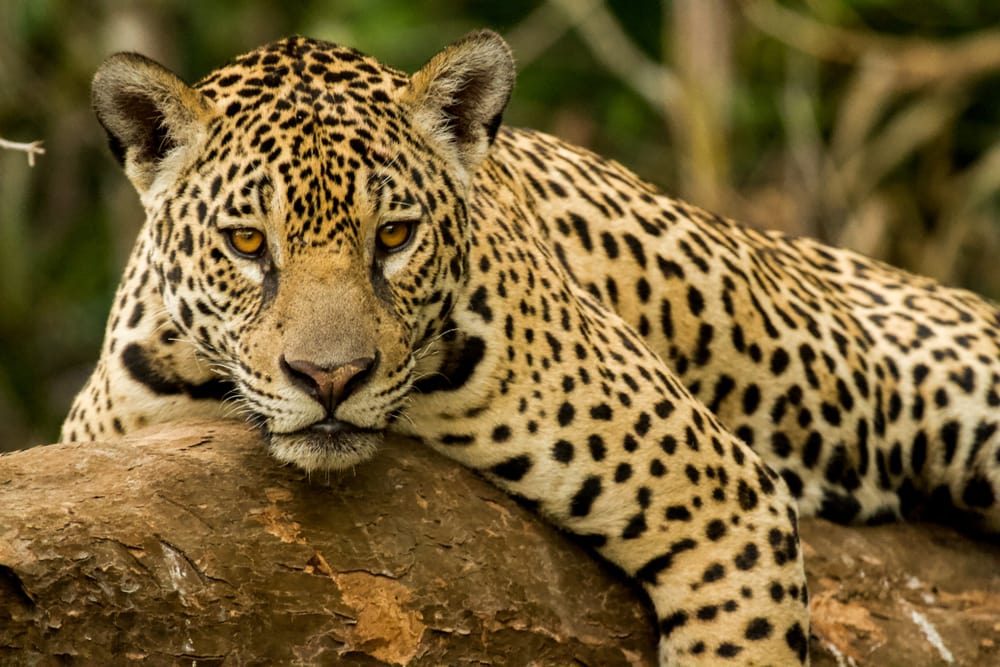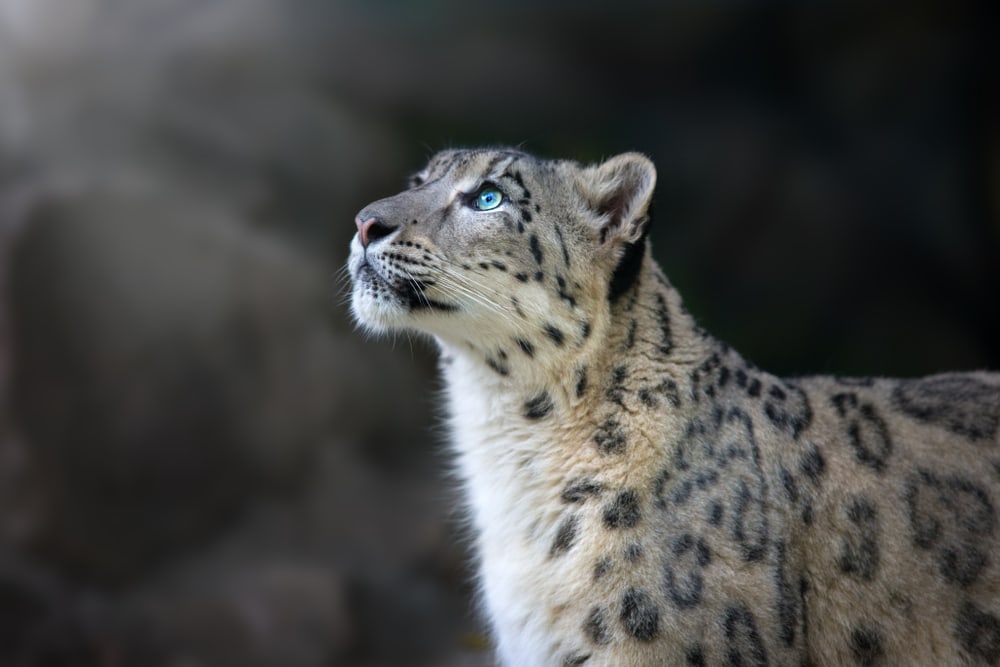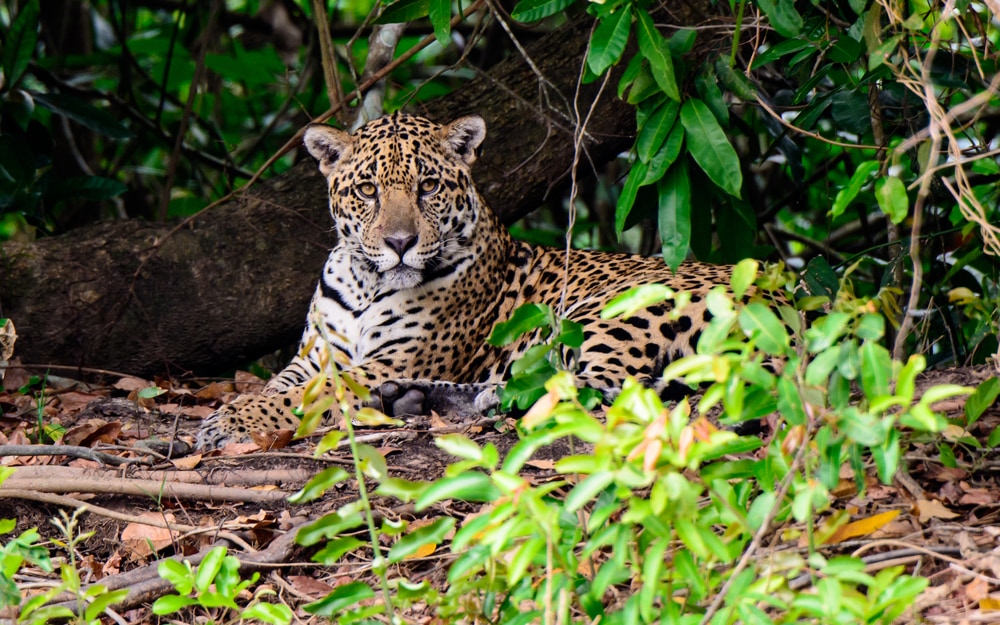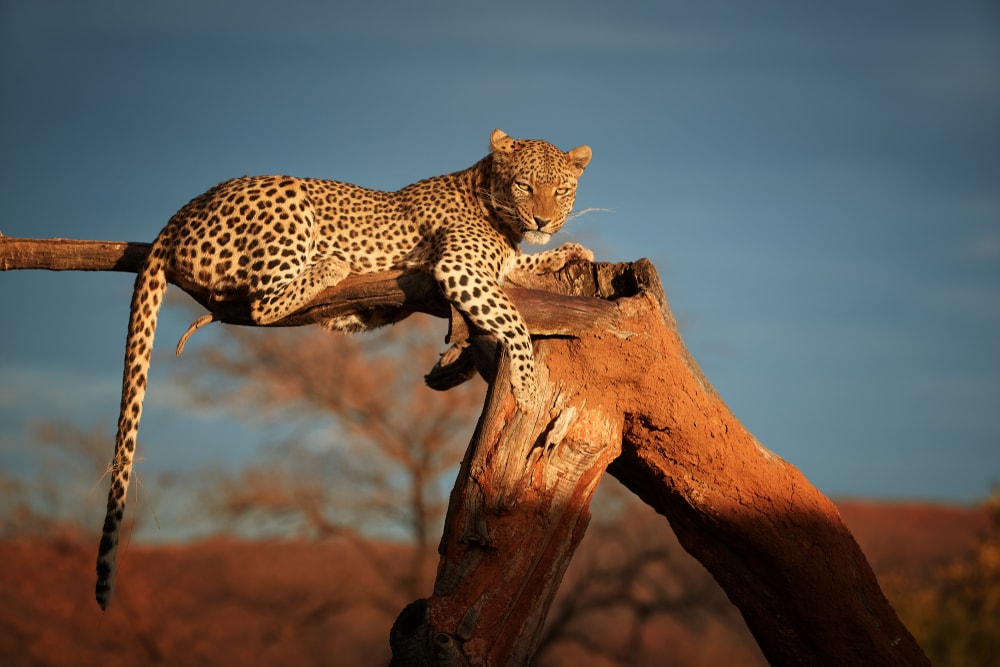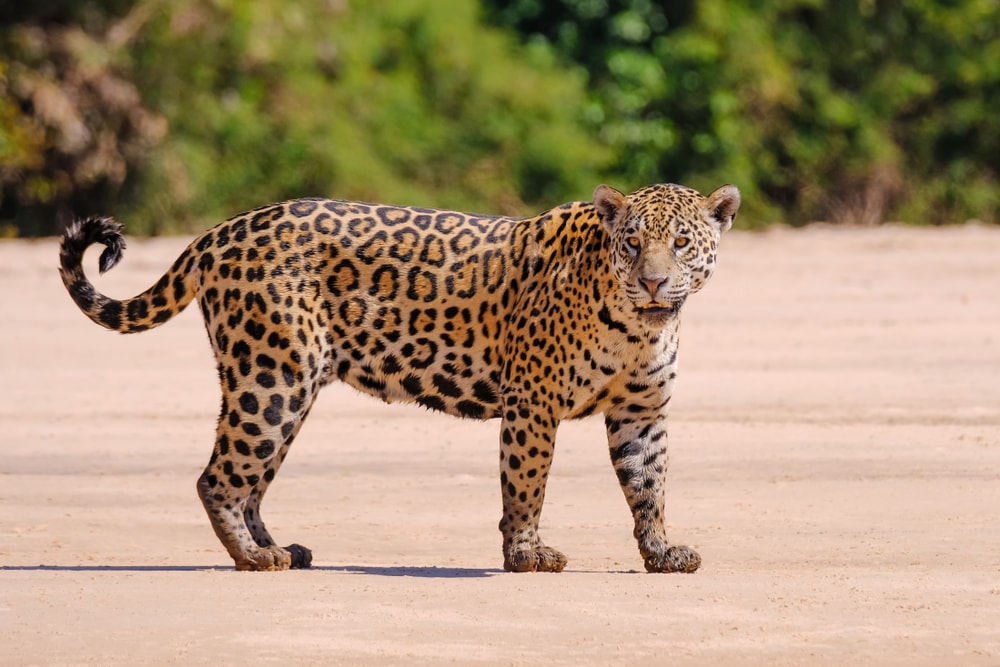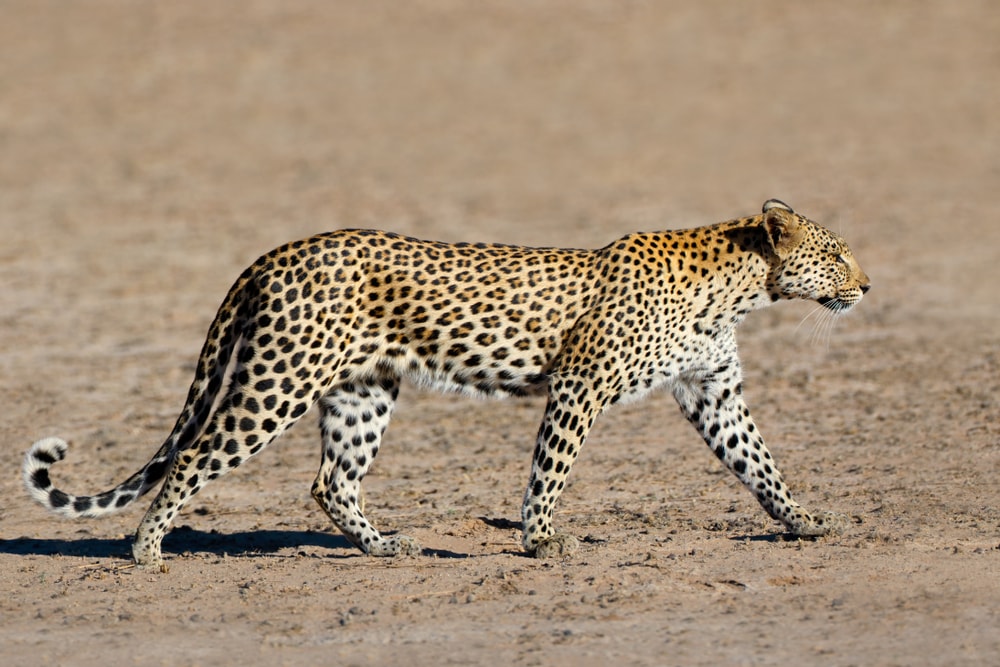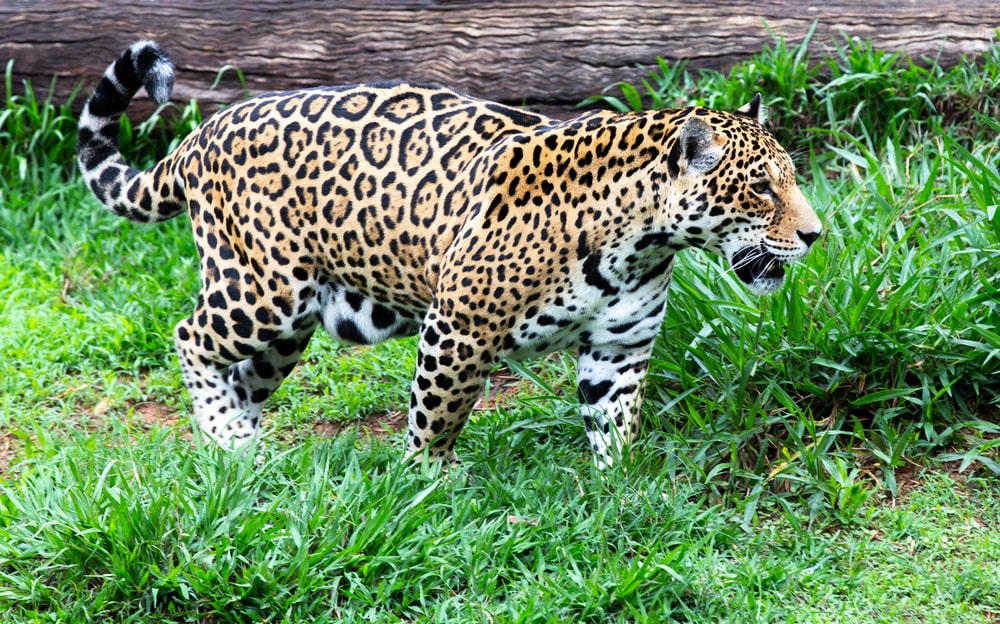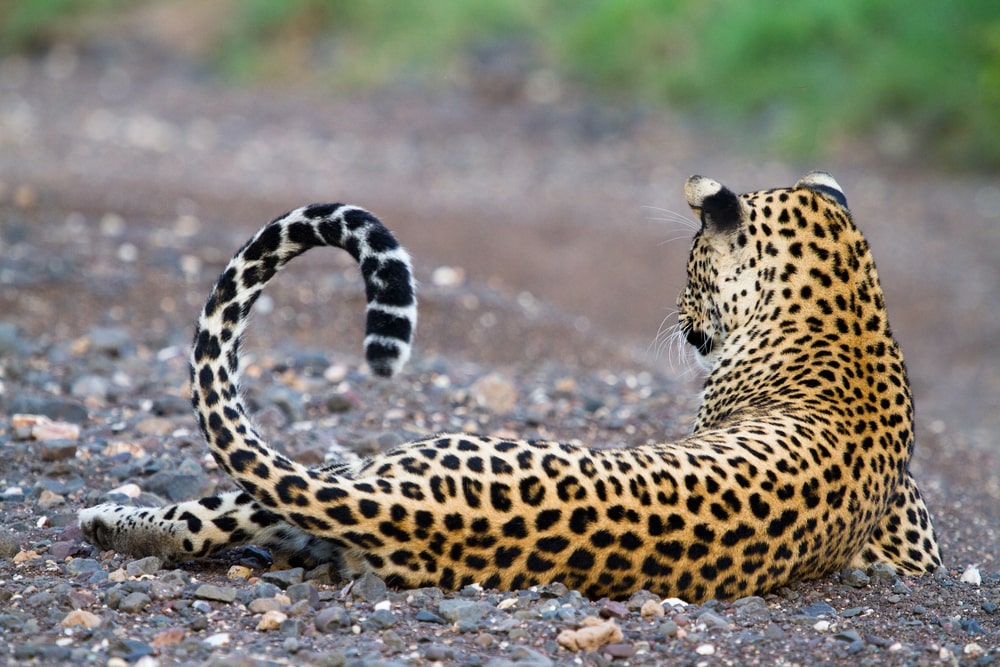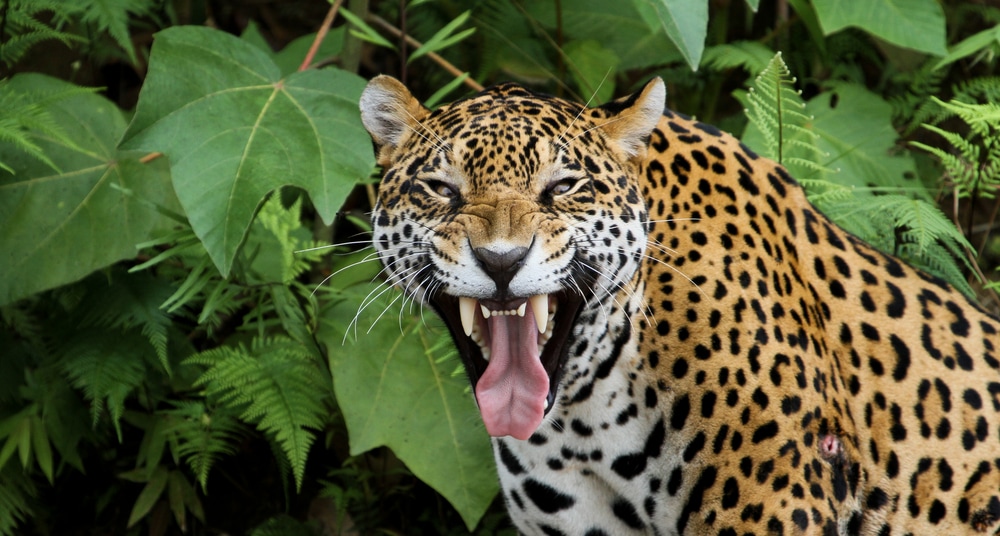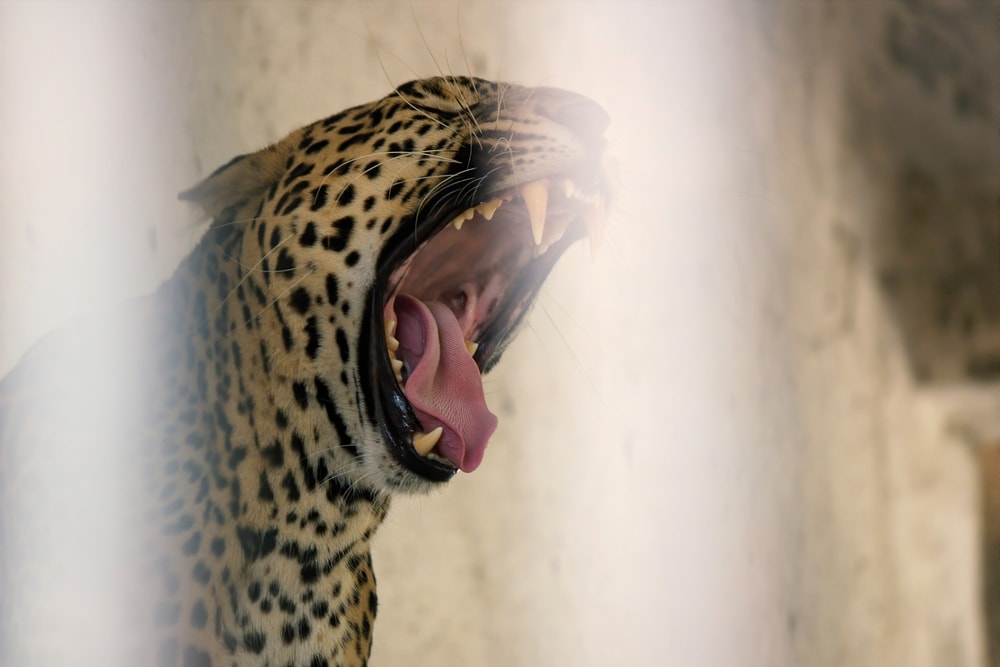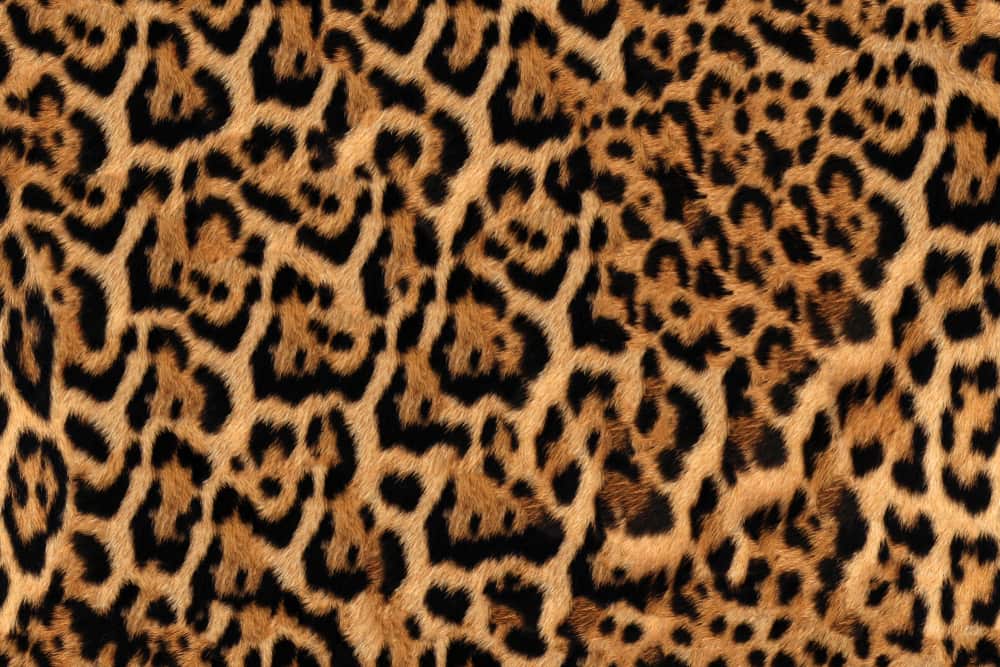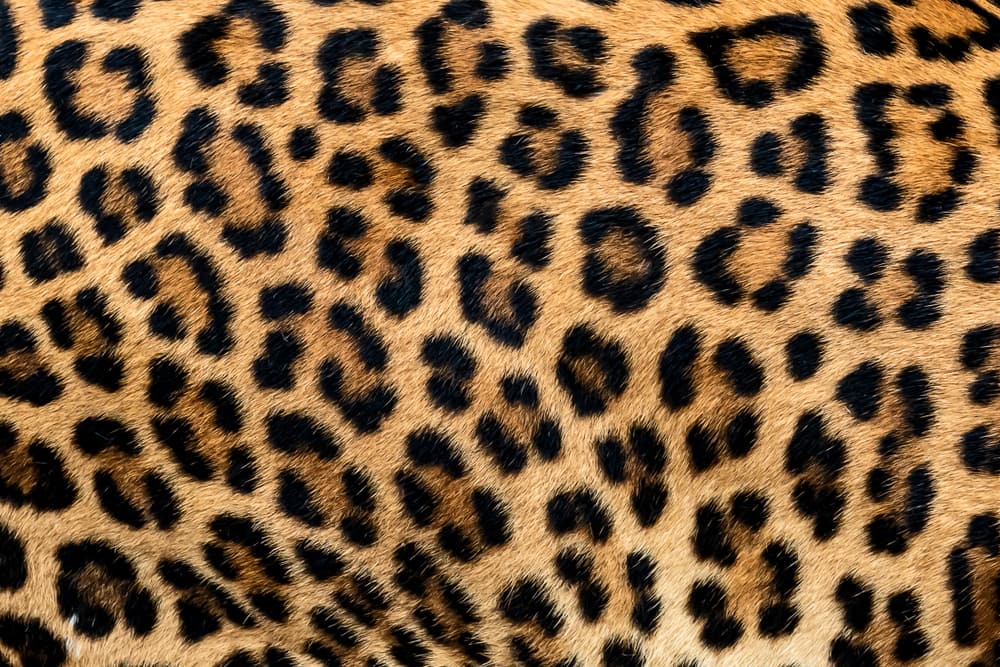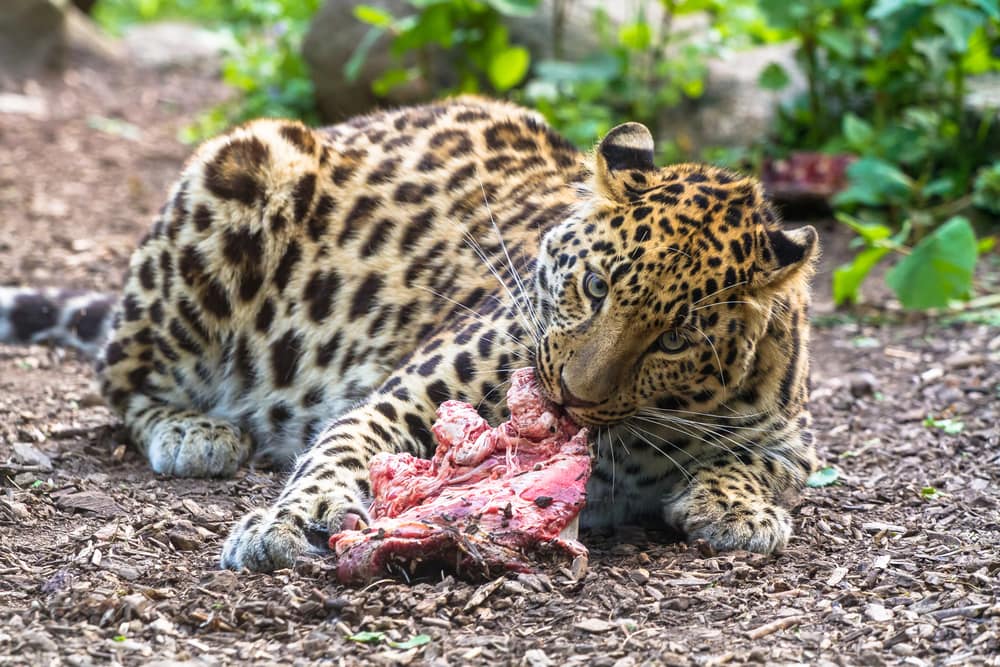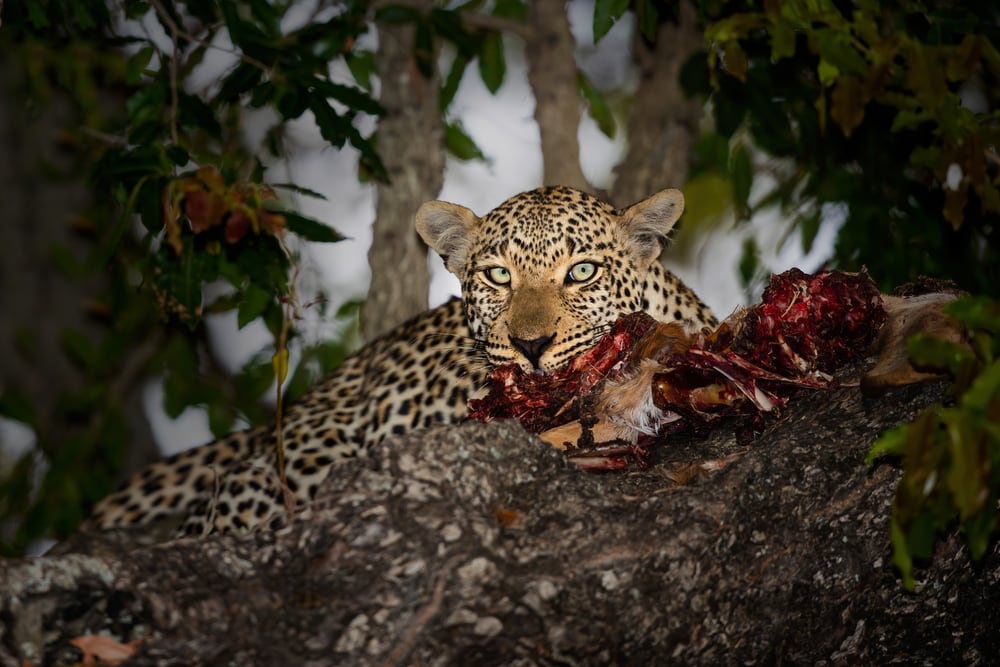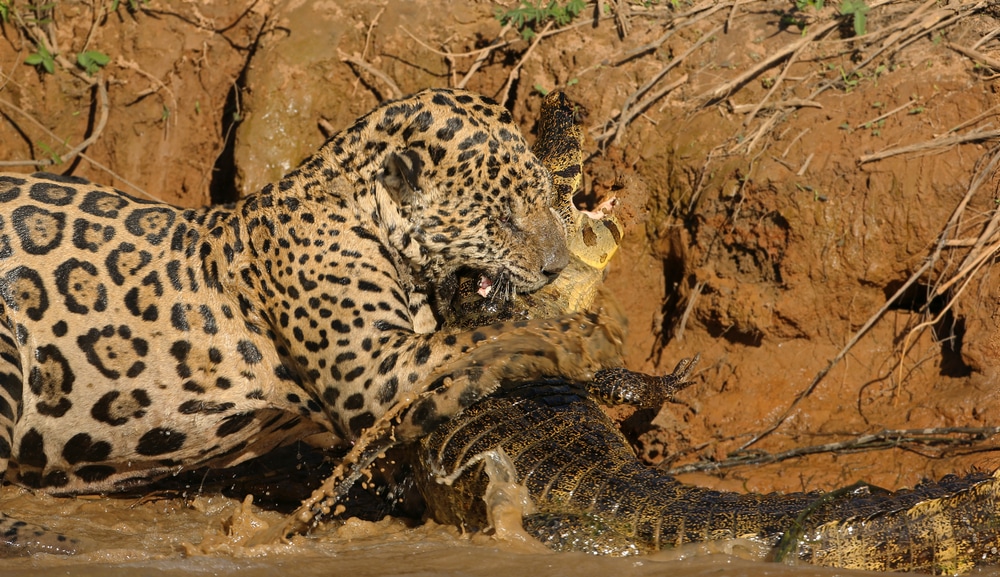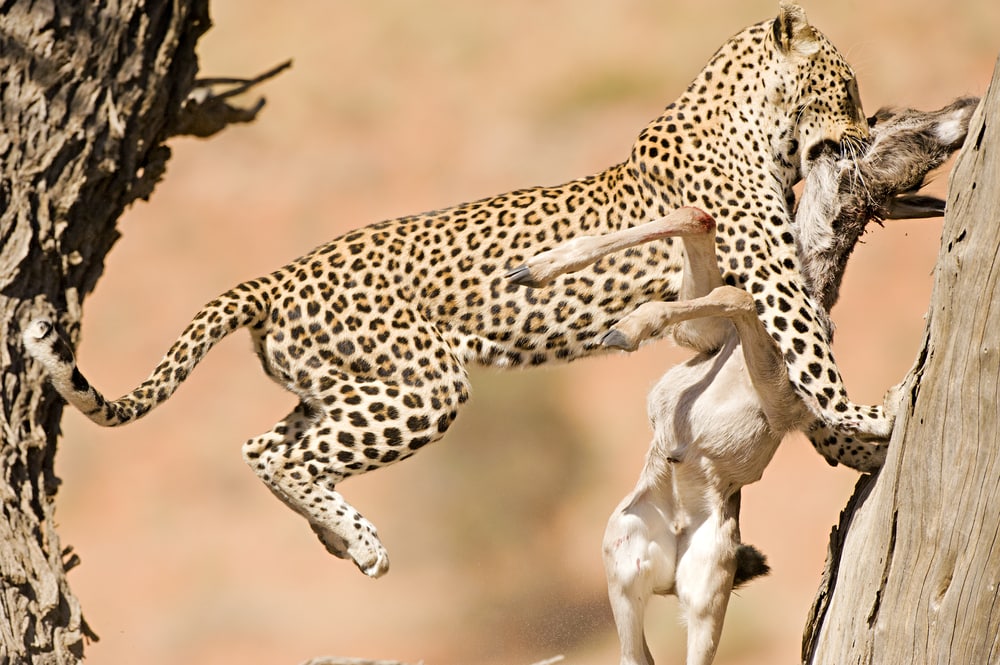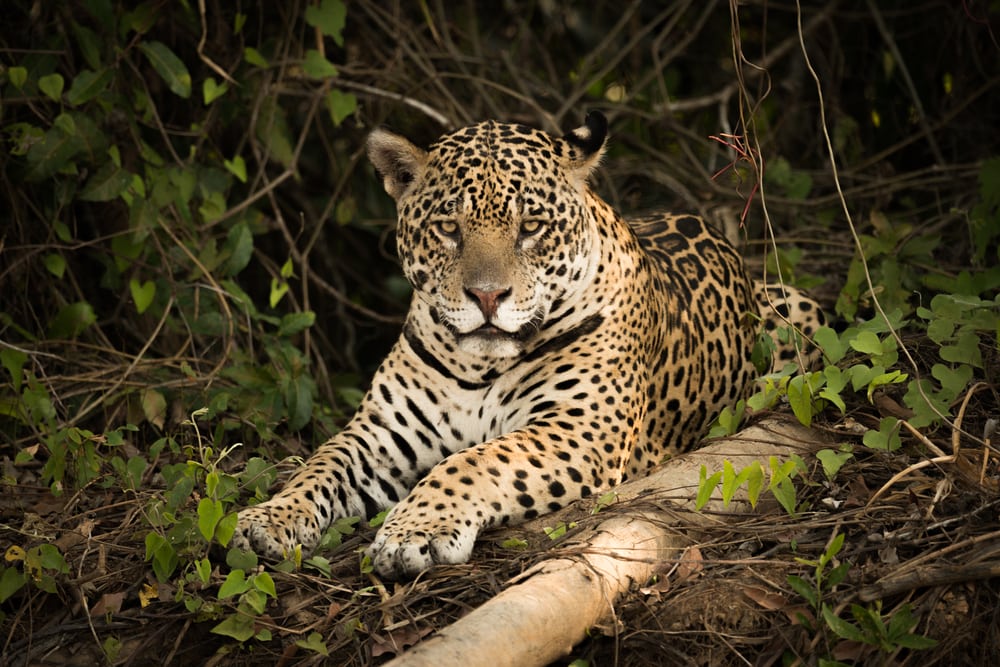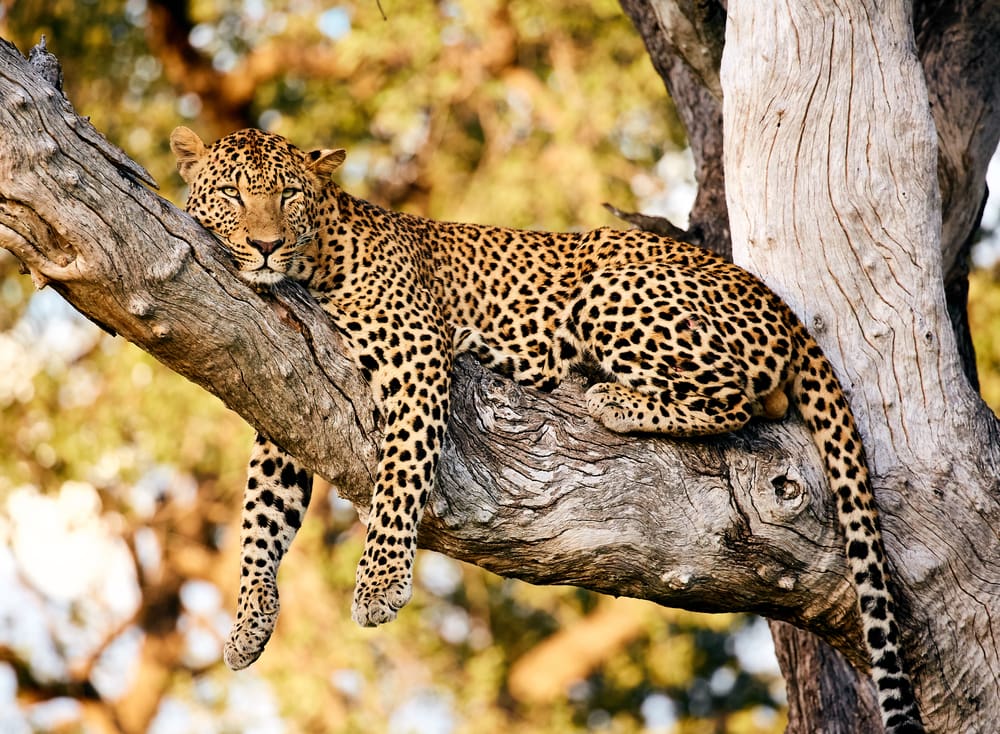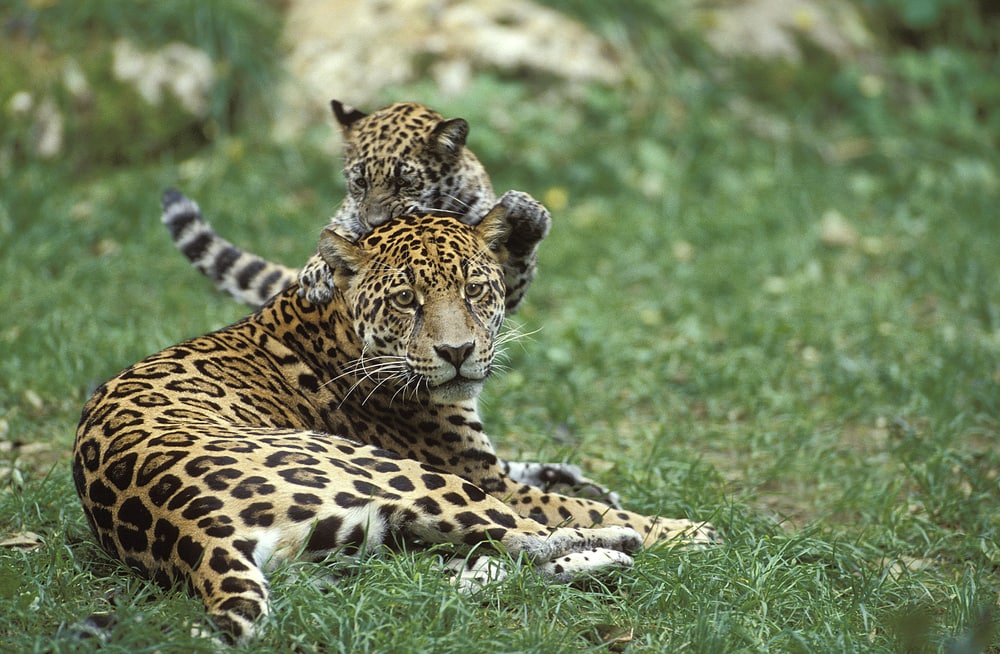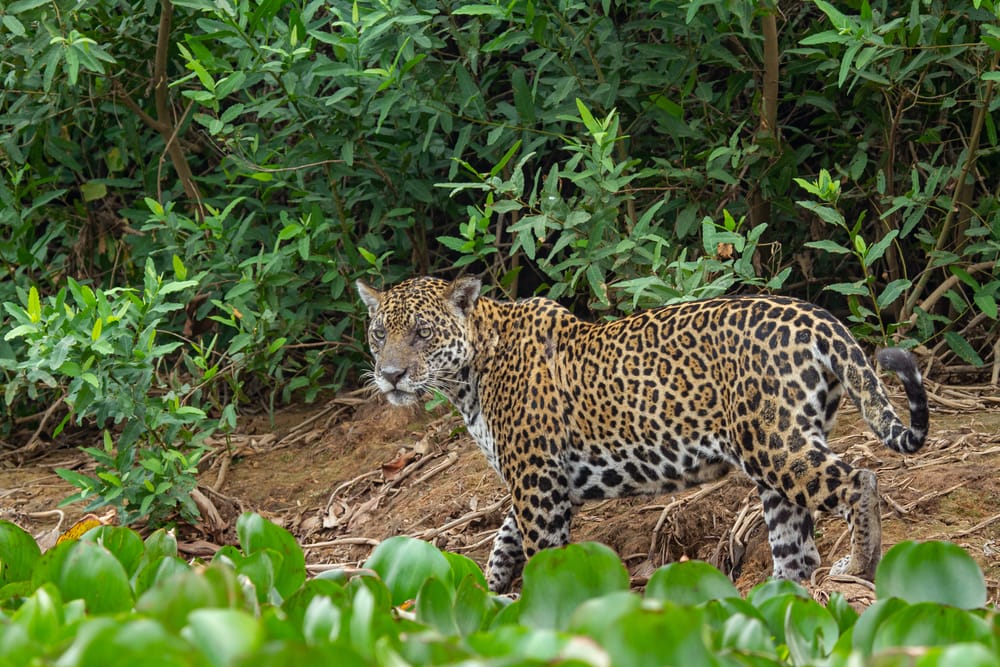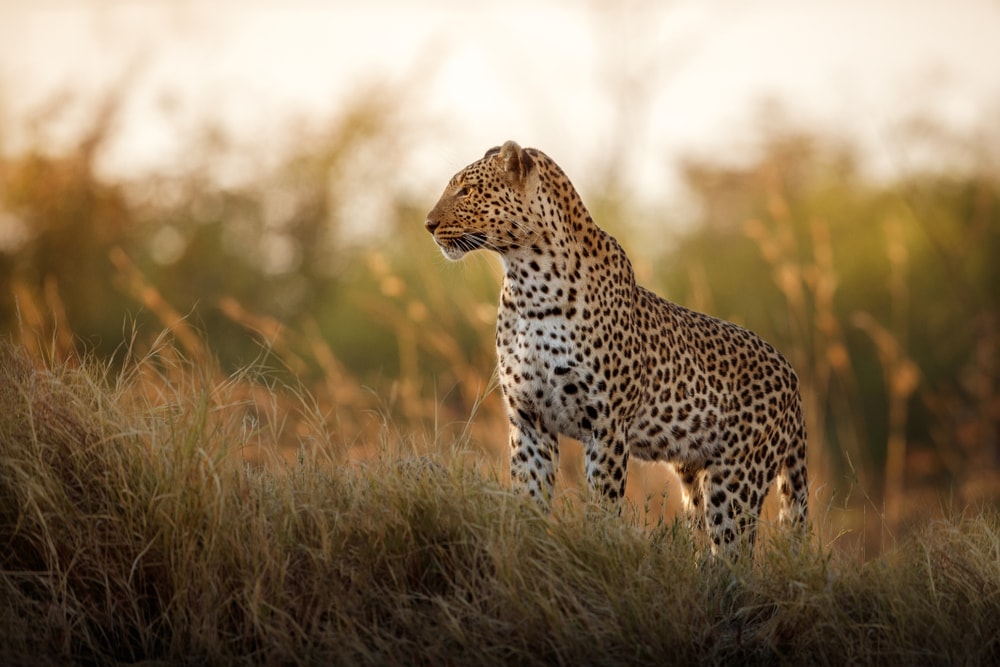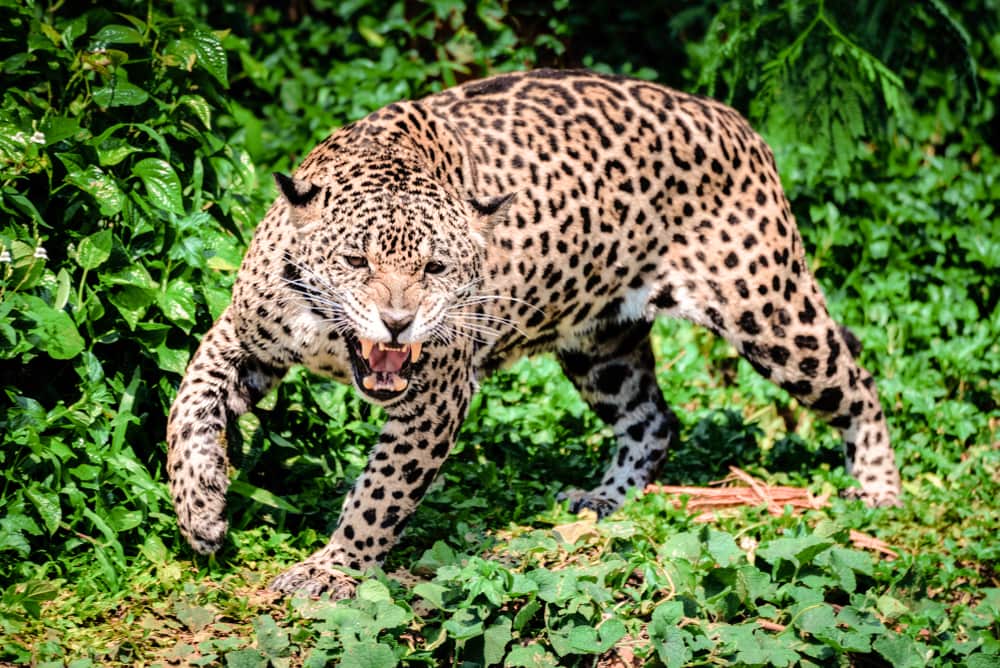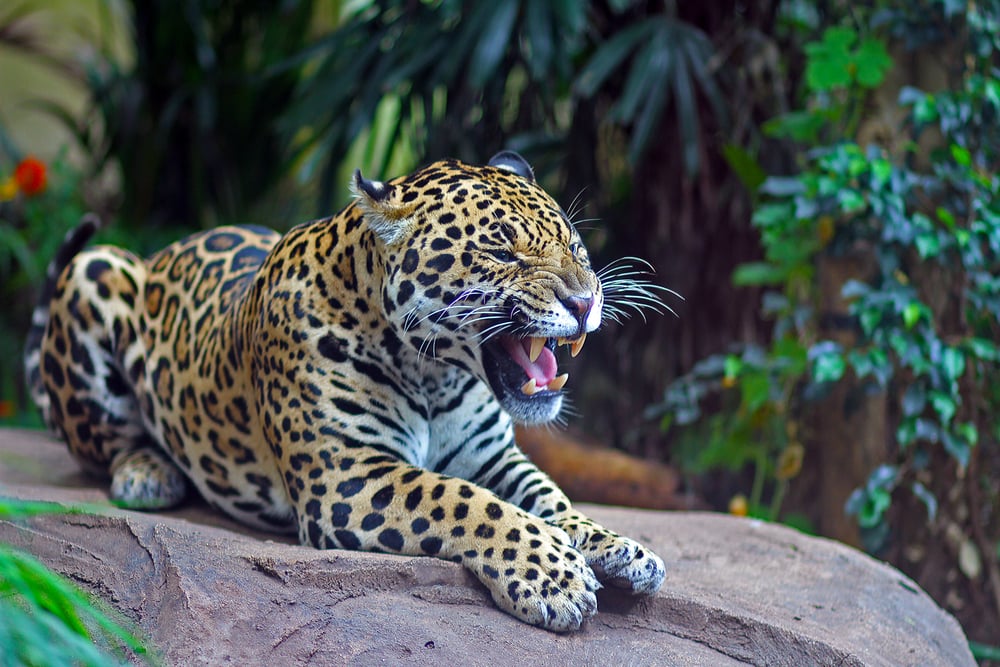Outforia Quicktake: Key Takeaways
- Jaguars and leopards belong to the Panthera Felidae family and share several similarities such as the ability to climb trees and swim, similar golden pelts with black markings, and both are at least vulnerable to extinction.
- Differences between the two include their geographical locations (jaguars are native to Central and South America, leopards are native to Africa, the Middle East, China and India), body size and shape, and their distinctive spots. Other differences include their diets and methods of killing prey.
- Both species face threats like habitat loss, population fragmentation, hunting pressure and being designated as nuisance animals as humans increasingly encroach on their habitats.
- In a hypothetical fight, a jaguar, due to its superior size, strength, and jaw power, would likely be the victor against a leopard.
- Black panthers, which are either jaguars or leopards, exhibit a genetic mutation causing them to produce surplus pigment, turning their fur black.
Outside of a zoo, you’ll likely never be close enough to a big cat to have to worry about exactly what kind of animal you are facing. On the surface, jaguars and leopards seem to be incredibly similar, in fact, many people can’t tell them apart.
Oceans of distance between habitats, unique body structure and distinct behaviors are the easiest way to tell if the cat you’re looking at is a leopard or a jaguar. We’ll be discussing what is similar, what is different, and answer some common questions you might have about both animals.
What’s Similar About Jaguars and Leopards?
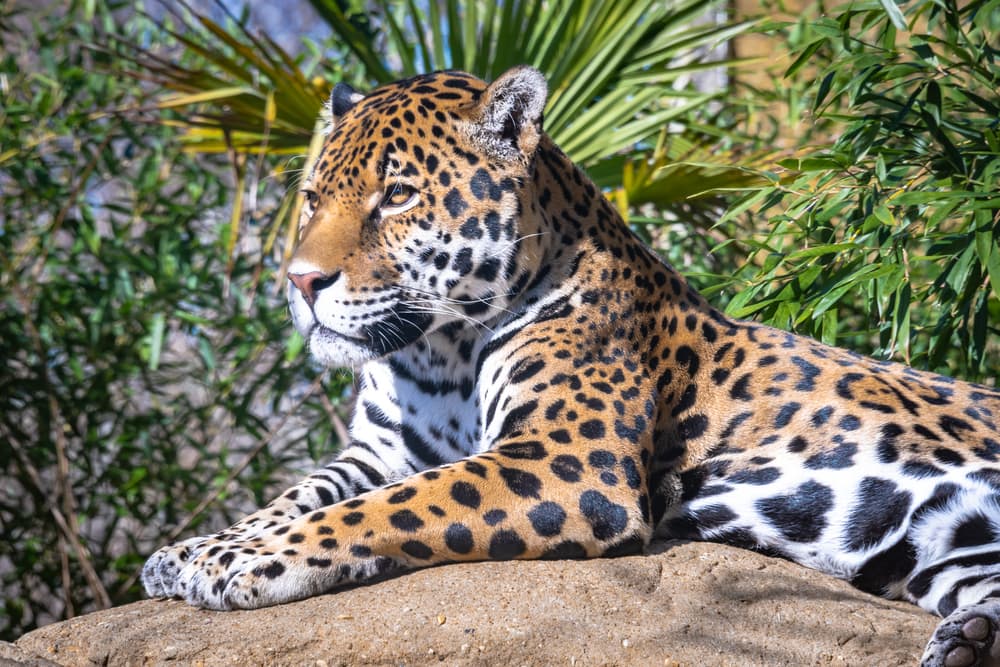
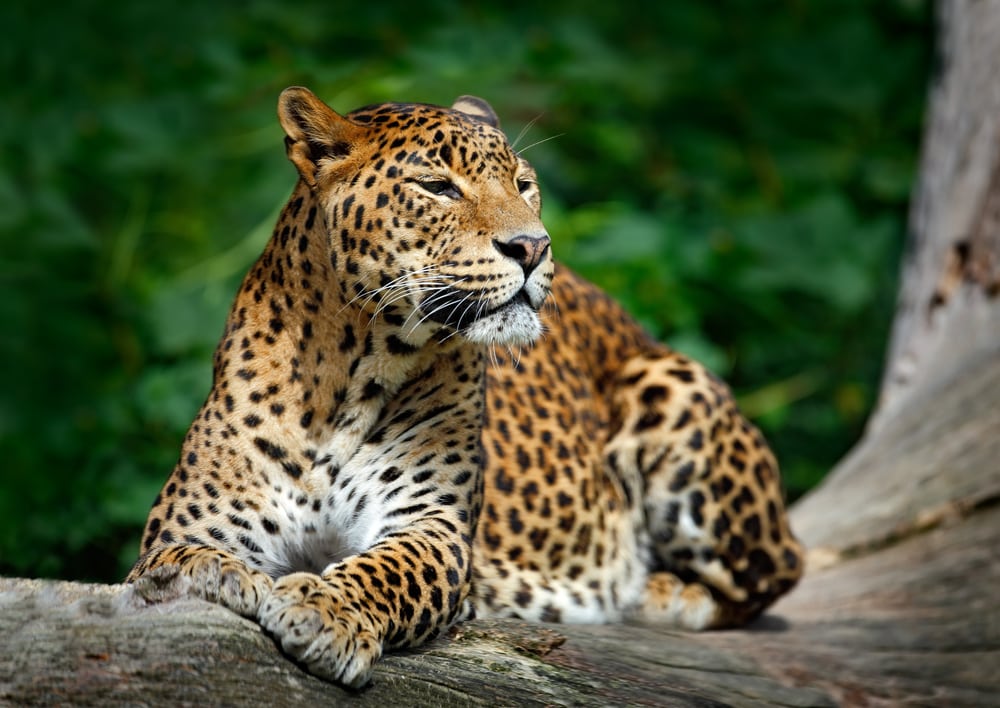
Here are some fun facts about leopards and jaguars, and a few ways both are very similar:
- Both species have tawny, golden pelts with black markings on them.
- Both species are part of the Panthera Felidae family. Along with lions and tigers, and snow leopards, they make up the four true “big cats.”
- Both animals have the ability to climb up trees and swim.
- Both animals are considered to be at least vulnerable to extinction.
- Despite living in different climates, terrains, and on different continents, both species face similar conservation issues.
- Snow leopards are an entirely distinct species from the leopards you normally think of.
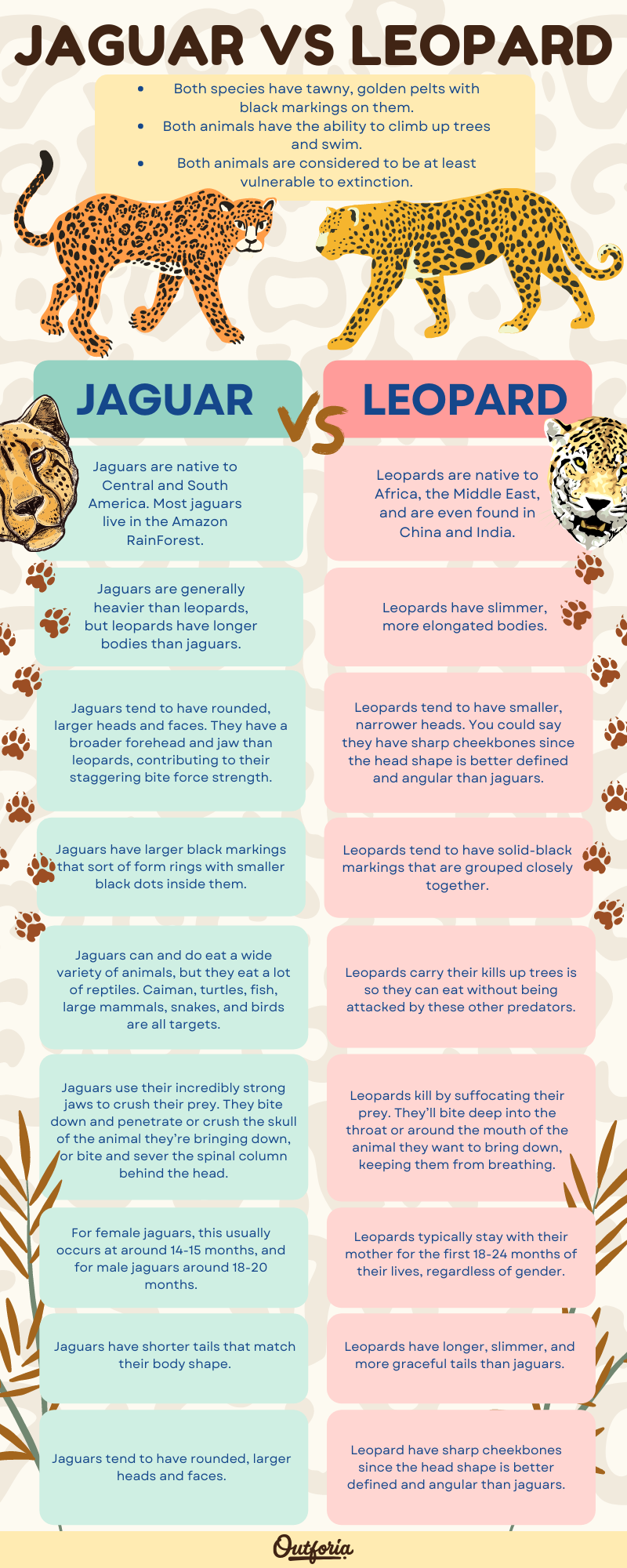
Share This Image On Your Site
<a href="https://outforia.com/jaguar-vs-leopard/"><img style="width:100%;" src="https://outforia.com/wp-content/uploads/2022/02/Jaguar-vs-leopard-infographics-02082022.png"></a><br>Jaguar vs Leopard Infographic by <a href="https://outforia.com">Outforia</a>You may also like: Check Out These 7 Ferocious Big Cats You Should Know About with Photos, Infographics, Facts, and more!
Difference Between Jaguar and Leopard: 10 Things That Set Them Apart
1. Geographical Range
Perhaps the largest difference between the two animals is the regions they call home. It isn’t a simple question of their preferred climate and terrain, oceans and continents separate jaguars and leopards.
Jaguars are native to Central and South America. Most jaguars live in the Amazon RainForest. Today, jaguars typically prefer dense, humid forests.
Leopards are native to Africa, the Middle East, and are even found in China and India. Most of the leopard population is found in eastern and southern Africa. Today, leopards typically prefer the grassy savannah of Africa.
Both big cats once roamed much more widespread areas. Jaguars could be found in the deserts and mountains of the United States and leopards could be found in Europe, Asia, and Russia.
2. Body Size and Shape
Both leopards and jaguars are big cats. Jaguars are generally heavier than leopards, but leopards have longer bodies than jaguars. Jaguars have stockier bodies that have a more compact shape. Leopards have slimmer, more elongated bodies.
Full-grown jaguars can weigh as much as 120 kilograms (over 250 pounds), while full-grown leopards generally weigh around 88 kgs (190 pounds). Both have a similar height when measured standing at the shoulder.
Both species exhibit some sexual dimorphism, in that females are smaller than males. In leopards, females are, on average, ten percent lighter than males. In jaguars, females are, on average, thirty percent lighter than males.
3. Tail Difference
Another way to tell between jaguars and leopards is by looking at their tail. Leopards have longer, slimmer, and more graceful tails than jaguars. Jaguars have shorter tails that match their body shape.
Leopards have longer tails because they spend more time in trees. The extra length helps them balance while climbing up with prey.
4. Head and Teeth
Although they do have very similar appearances, the head and teeth of jaguars and leopards do have different shapes.
Leopards tend to have smaller, narrower heads. You could say they have sharp cheekbones since the head shape is better defined and angular than jaguars.
Jaguars tend to have rounded, larger heads and faces. They have a broader forehead and jaw than leopards, contributing to their staggering bite force strength.
Hopefully, you won’t be seeing them, but jaguars and leopards have different teeth as well.
Leopards have sharp canine teeth with deep, thick roots. They’re great at slicing into the meat and the extra strength in the roots helps keep them from breaking off when it carries prey up a tree.
Compared to leopards, jaguars have larger teeth. Due to their favorite killing methods (more on that later) and massive bite force, their teeth need to be larger to withstand more pressure.
5. Spots
Both animals seem to have golden coats with black spots or markings on them. While this is true, the spots are totally different from each other.
Leopards tend to have solid-black markings that are grouped closely together. Jaguars have larger black markings that sort of form rings with smaller black dots inside them. They’re also more complex and farther spread out on the animal’s body.
6. Diet and Distinct Habits
Since they inhabit different ecosystems and sit at different levels of the food chain, jaguars and leopards have different diets.
Jaguars are the apex predator of their environment, with no natural predators and few challengers aside from other jaguars. Even other top predators like caiman are prey species for them.
Jaguars can and do eat a wide variety of animals, but they eat a lot of reptiles. Caiman, turtles, fish, large mammals, snakes species, and birds are all targets.
Leopards share their environment with larger animals like hyenas and lions. One reason they carry their kills up trees is so they can eat without being attacked by these other predators.
Birds, gazelle, fish, antelope, and all types of lizards are prime targets for leopards. While the jaguar tends towards reptiles, leopards take what they can get, and usually avoid larger prey that would be harder to bring up trees.
Both cats are fairly good swimmers. Leopards will usually avoid swimming unless they have to. Jaguars, like tigers, do incredibly well in and around water. They’ve been seen diving for fish, tackling caiman, and targeting anacondas in the water.
Since they’re at the very top of the food chain, jaguars tend to be bolder. They’re more willing to take on large prey and challengers as they have little to fear from other animals they encounter.
Leopards are more skittish than jaguars. They do have to fear other animals they encounter and will move away or even abandon a kill if larger predators move in.
Both animals are capable of climbing trees. Leopards are arboreal, meaning they spend a lot of time in trees, whether to stash prey or to rest safely away from predators. Jaguars spend most of their time on the ground, climbing only when necessary.
7. Killing Style
Jaguars and leopards are both ambush predators that stalk their prey. Once in range, they use a short burst of speed to close the distance. How they actually kill their prey is very different though.
Leopards kill by suffocating their prey. They’ll bite deep into the throat or around the mouth of the animal they want to bring down, keeping them from breathing. They can wrap their slender frames around their prey to add weight and drag the animals down.
Jaguars use their incredibly strong jaws to crush their prey. They bite down and penetrate or crush the skull of the animal they’re bringing down, or bite and sever the spinal column behind the head. Of all the mammals in the world, jaguars have the second strongest bite force behind hippos.
8. Social Behavior
Both animals tend to be solitary species. Seeing animals together is usually a mother and her cubs, a breeding pair, or in rare circumstances, they’re consuming a massive food source.
Both animals will fiercely defend their marked territory from others encroaching on it. It’s more likely to see leopards together, as they could just be hiding up the same tree, but this is usually rare.
9. Caring for Young
Both jaguar and leopard mothers look after their young until they’re old enough to fend for themselves. This age of independence can vary, however, it is different between the two species.
Leopards typically stay with their mother for the first 18-24 months of their lives, regardless of gender.
Jaguars tend to reach independence at a younger age. For female jaguars, this usually occurs at around 14-15 months, and for male jaguars around 18-20 months.
10. Future Outlook and Conservation
The International Union for Conservation of Nature’s Red List IUCN Red List is responsible for the analysis of the risk of extinction individual species face. Leopards are listed as vulnerable to extinction, while jaguars are listed as near-threatened. Both species are on the decline due to a variety of factors that we’ll discuss in detail further on in the article.
You mat also like: 7 Types Of Camels: All About The Old And New World Camelids
Habitat Destruction and Population Fragmentation
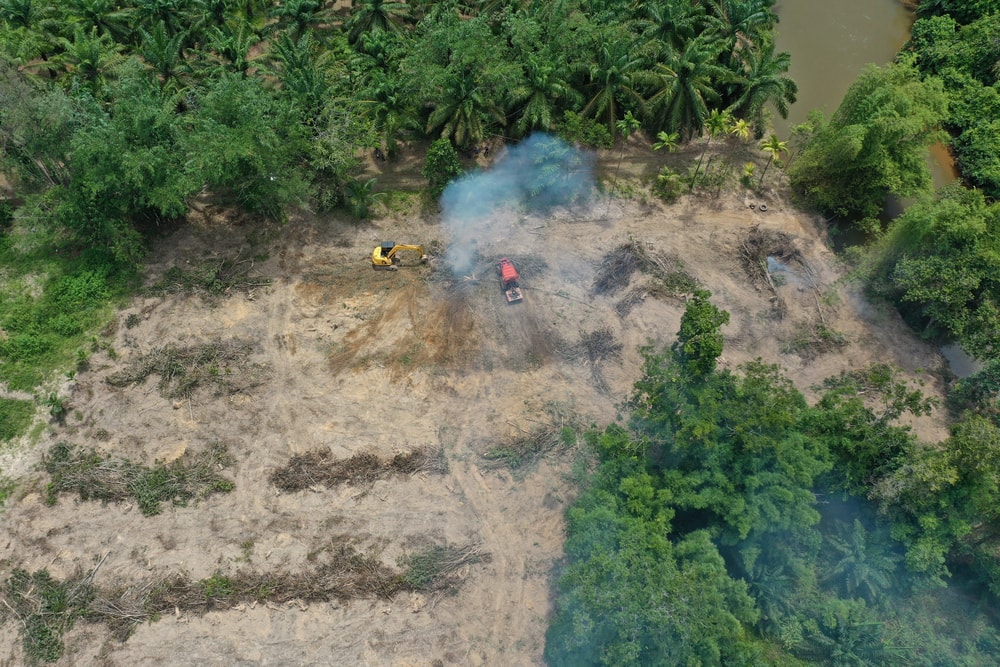
Most jaguars inhabit the Amazon RainForest, but generally today they’re all usually found in heavily forested areas. These areas are subject to heavy deforestation and destruction due to urban sprawl.
Habitat destruction and pollution are major problems. Chemical dumping and agricultural runoff into the Amazon River contribute to ecosystem degradation throughout the rainforest.
Deforestation may contribute the most to the jaguar’s decline. Its habitat and territory are slowly being reduced. Its prey is also under threat, becoming harder and harder to find.
As vast swaths of forest are removed, habitats also become fragmented. Some areas simply can’t be crossed safely by animals, isolating populations from each other and resulting in issues with finding mates, less genetic diversity, and less territorial expansion.
Leopards face very similar problems in Africa and Asia. Urban sprawl and habitat destruction from a variety of reasons make life on the savannah difficult for the animals. As they come more into contact with people, they’re forced into smaller and smaller pockets of land.
You may also like: Learn What Is Poaching and Why Is It Practiced with Photos, Infographics, Facts, and more!
Hunting Pressure
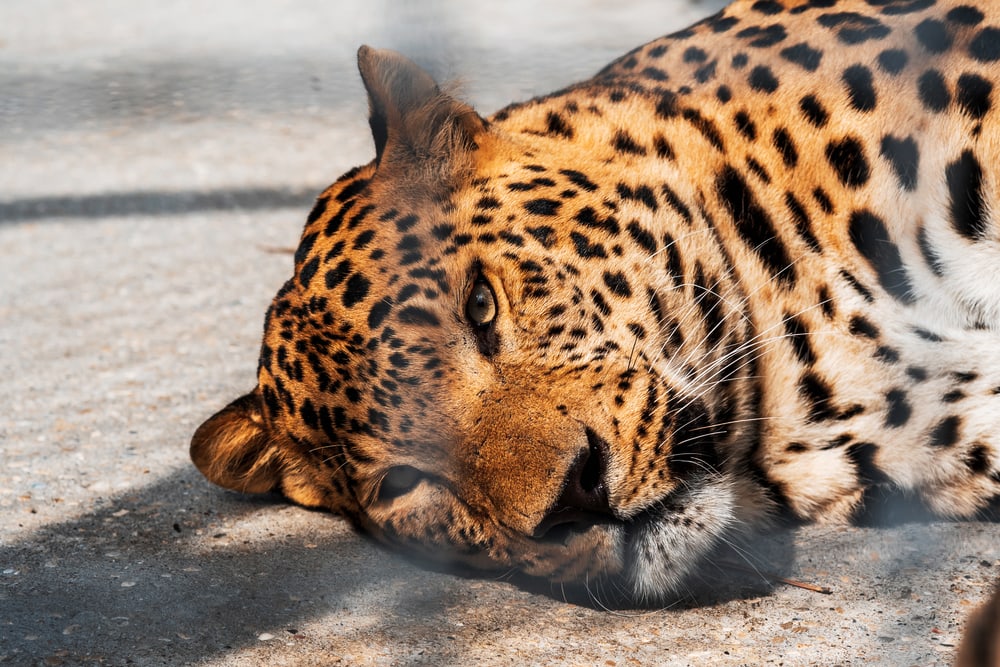
A large part of why leopards and jaguars no longer roam such large ranges as they used to is because they were hunted to extinction in those areas. Both species are considered prize trophy animals by some hunters. Trophy hunts for the animals are fairly rare, but not unheard of.
Nuisance animals are animals that pose a significant threat to humans and/or pets. Typically, nuisance animals are either hunted or captured and relocated. Both animals suffer from being designated as nuisance animals as people further encroach on their lands.
Both animals are used in traditional and tribal practices. Leopards in particular are used in traditional Chinese medicine. Their teeth, bones, claws, and body parts are all assigned healing properties of sorts, so there is demand in Asia for those ingredients.
Both species are the target of poachers, mainly for their beautiful furs. Leopard print is a popular pattern in general, and real fur can fetch a fairly hefty price. Check out to our post about what is poaching to better understand why people do it.
Which Is More Aggressive, Leopards or Jaguars?
Jaguars tend to be more aggressive towards people and other animals than leopards are. While they’ll fight others of their own kind in territorial disputes, leopards are regularly attacked or run off by larger animals. They tend to climb trees or vacate the area to try to stay safe.
Jaguars on the other hand have little to fear from other species in their environments and prey on just about everything around them. They tend to stand their ground and fight rather than back off from a challenge.
When it comes to humans, both species tend to avoid them. In most areas, humans represent a major threat to the safety of both animals. Both though, have documented cases of man-eaters, where individual leopards or jaguars have actively hunted and preyed on humans.
Attacks by either species are incredibly rare today. Both have tended to be pushed into more remote areas by human expansion, or they’re removed when they come into contact with people.
You may also like: Know the Similarities and Differences Between Turtle vs Tortoise and Learn How to Identify Them: With Images, Chart, Description, and More!
Jaguar vs Leopard: Who Would Win In A Fight?
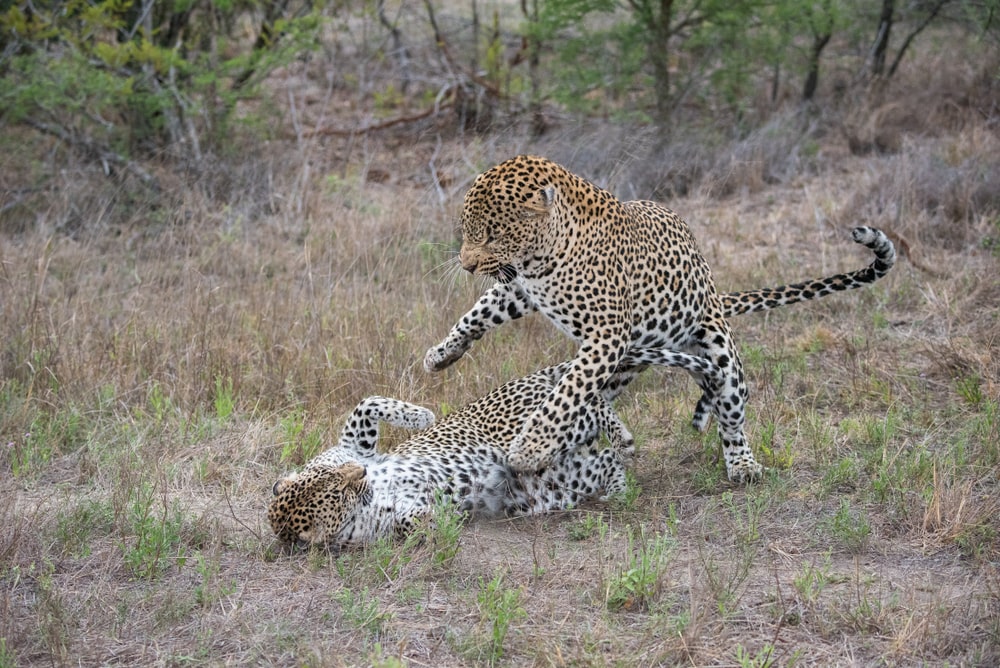
We don’t actually want to pit these big cats against each other, but hypothetically, which one would win if the two squared off?
Because of their superior size, strength, and jaw power, jaguars would likely come out the winner if the two clashed. It’s possible a leopard could get the jump on a jaguar, or be able to get away, but a fair fight between the two just wouldn’t be a fair fight.
You may also like: Learn More About the Similarities and Differences Between Lynx vs Bobcat: Complete with Images, Facts, Chart, and More!
Jaguar vs Leopard FAQ
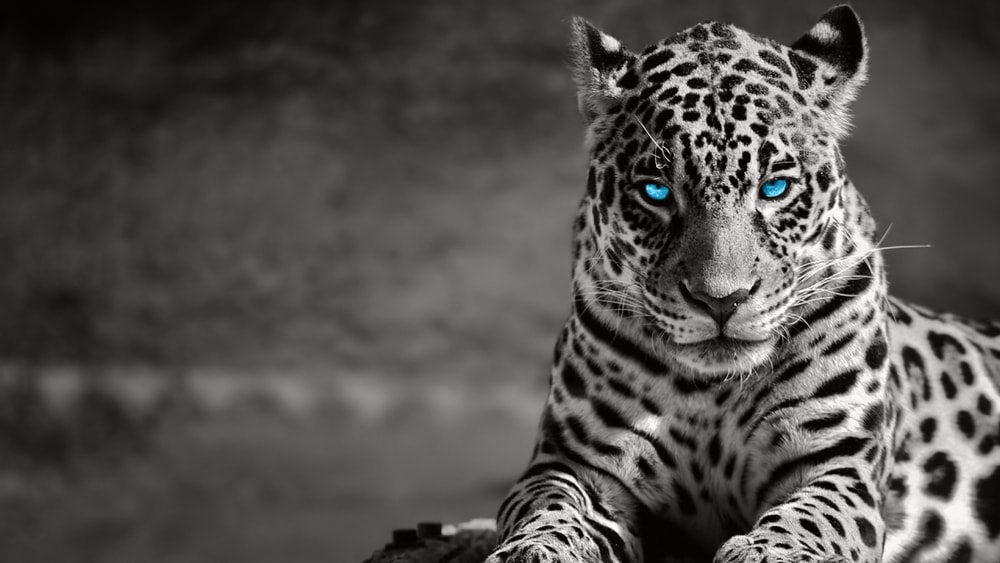
What are Black Panthers?
Black panthers are incredibly rare, but they do exist. The animals have a genetic mutation that causes severe melanism, where they produce surplus pigment in their coats which turns their fur black.
A black panther can be either a jaguar or a leopard, it’s simply a melanistic individual.
If you have the chance to get close enough, you can still see the animal’s spots in the dark coat. Leopards will have their traditional spots, while jaguars will have theirs.
It’s debated in the scientific community if melanism is an advantage or disadvantage. Unlike albinism, melanistic animals tend to find it easier to hide and blend in with their surroundings. This can be helpful when stalking prey or avoiding potential threats.
What threats exist for jaguars and leopards?
Similar threats exist for both jaguars and leopards, just in different ways. Habitat loss, population fragmentation, and hunting pressure from humans all contribute to the decline of the animals.
You may also like: The Are The Types of Horses That You Need To Know From Wild to Domestic with Photos, Infographics, Facts, and more!




